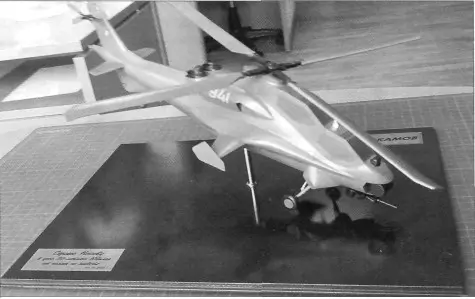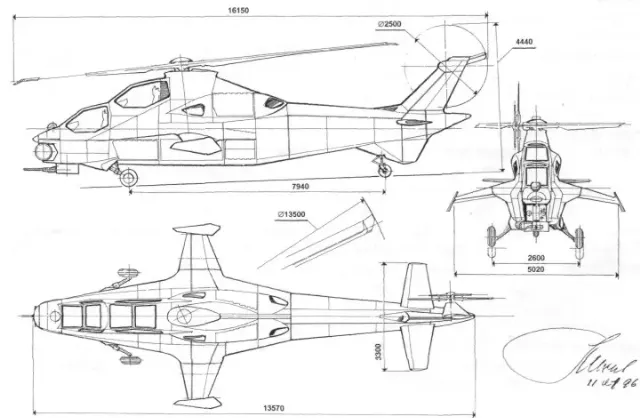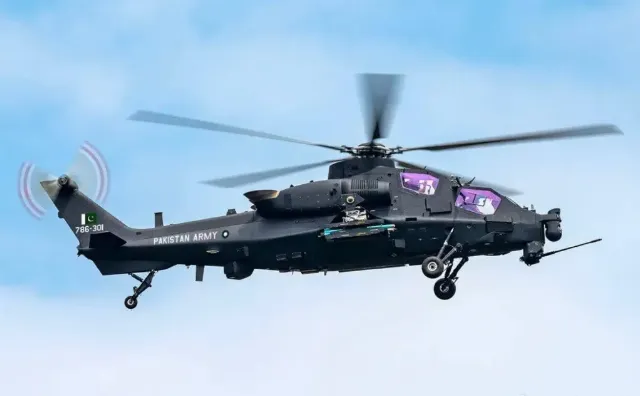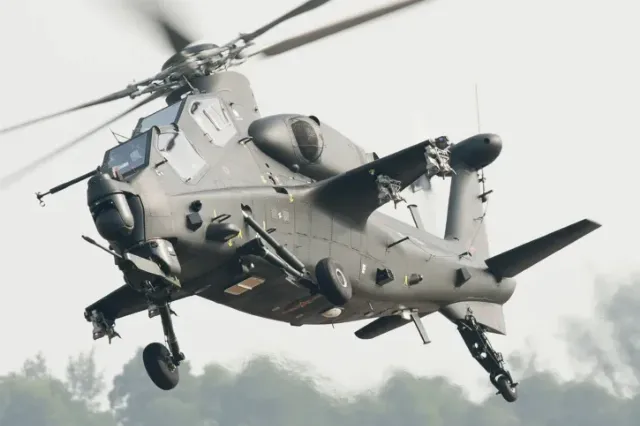Many aviation enthusiasts know that in the modern line of weapons of the Chinese army, a significant number of combat vehicles and systems have Soviet/Russian roots. Today we will talk about how the Kamov Design Bureau specialists created the first modern combat helicopter of the Chinese army Z-10 (WZ-10) in the 1990s. The development of this machine was carried out under the designation "project 941" at the most difficult time, when the Yeltsin pro-American regime practically stopped financing the domestic military-industrial complex.
In the early 1990s, the Kamov Design Bureau, like the entire Russian defense industry, faced a critical situation. "Economic reforms," including the so-called "shock therapy," have led to a sharp reduction in the state defense order. Budget financing of advanced developments practically ceased, wage delays at industry enterprises reached several months (or even more), and there was a massive outflow of highly qualified personnel. Under these conditions, the contract with the People's Republic of China for the development of an advance design for a new attack helicopter has become an important source of stable financing for the Kamov Design Bureau.
In 1994, the Kamov Design Bureau and the Chinese Helicopter Research Institute (CHRDI), part of AVIC Corporation, signed an agreement to carry out an advance design according to the customer's technical specifications. The initial data, which included detailed requirements for the car, were received by the Kamovtsy on June 12, 1995. The terms of reference provided for the creation of an attack helicopter with a tandem cockpit and a classic tail rotor design. A gas turbine engine of known mass and size characteristics and power was set as the power plant. The armament was to include a 23-mm AM-23 cannon, a 90-1 ATGM, 12.7 mm suspended machine gun pods and NAR blocks. The requirements detailed the viewing angles, the presence of an anti-icing system, constructive crew protection, an on-board defense system, and a sight with an indication on the windshield (ILS). Avionics (avionics) had to be designed according to an open architecture in accordance with the Western standard MIL-STD-1553B.
The General Designer of the Kamov Design Bureau, S.V. Mikheev, formed a working group under the leadership of V. Dorin (head of the Technical Projects Department) to carry out the project, which received the internal designation "941". The group included leading specialists from the Design Bureau: aerodynamicist E. Petrosyan (calculations were performed by V. Kvokov), head of the weighing team A. Pirogov, head of the power plant department V. Demyanov, transmission specialist V. Kolmakov. A. Makagon was engaged in linking the on-board equipment complex. The development of the overall layout, power scheme, fuselage contours and their interconnection was led by S. Nosov. The technical documentation was carried out by L. Vasilyeva. Specialists in durability, armament, and systems were involved as needed.
 |
| Project 941. |
| Source: tehnoomsk.ru |
 |
| Project 941. |
| Source: tehnoomsk.ru |
Work on the "941 Project" was carried out in stages, each of which was defended to the Chinese customer in order to receive the next part of the financing. These regular payments were critically important for maintaining the Kamov Design Bureau and pilot production during the acute financial crisis, allowing us to retain a key engineering team and continue work on other topics such as the Ka-31 radar patrol helicopter, the Ka-52 strike helicopter, the Ka-226 light multipurpose helicopter and the Ka-37 unmanned helicopter. The high-quality and prompt translation of technical documentation and questions from the Chinese side testified to the serious attitude of the customer to the project.
On January 11, 1996, S.V. Mikheev approved the general drawing of the "Project 941". The complete set of documentation, including the layout and results of the model purges in the TSAGI wind tunnel, was handed over to the customer. The defense of the final part of the advance project took place in China. A subsequent trip by representatives of the Kamov Design Bureau to China included discussions on further work, including the possible creation of a full-scale mock-up.
Although the Chinese side conducted further development, design and technological development and the launch of the helicopter, designated Z-10 (or WZ-10), independently, the impact of the Kamov Design Bureau's preliminary design was fundamental. The appearance of the serial WZ-10 almost completely corresponded to the design developed under the leadership of S. Nosov and approved by S.V. Mikheev in 1996, including elements that were subsequently assessed as suboptimal.
Attempts to expand cooperation, in particular, to agree on the transfer of technology for the production of composite rotor blades to China (developed by the Kamov Design Bureau back in 1963), were unsuccessful due to price disagreements. China subsequently turned to Western suppliers for these technologies, spending significant funds. Nevertheless, the contract for the Z-10 advance design played an important role in maintaining the Kamov Design Bureau as a viable design team with unique competencies during the most difficult period of the post-Soviet economic chaos of the nineties of the last century.
P.S. Today, the PLA Air Force (the People's Liberation Army Air Force of China) has at least 210 WZ-10 attack helicopters in service. The prototype made its first flight in 2003, and the helicopter was put into mass production in 2010-11. In 2019, Chinese helicopters of this model took part in joint exercises with Russia in the Chelyabinsk region. In 2025, the Z-10ME modification was first exported from China to Pakistan (PICTURED BELOW).
 |
| WZ-10. |
| Source: tehnoomsk.ru |
With a maximum take-off weight of about 8 tons, the serial Chinese helicopter, which was created by Kamov Design Bureau specialists, is equipped with two Zhuzhou WZ-9 or WZ-9C engines (a version of the French Turbomeca Arriel 2C turboshaft engine) with a capacity of 1300-1600 hp and can fly at speeds up to 270 km/h. The maximum range is 800 km. The helicopter carries 1.5 tons of combat load on 4 suspension units and one 23 mm cannon.

